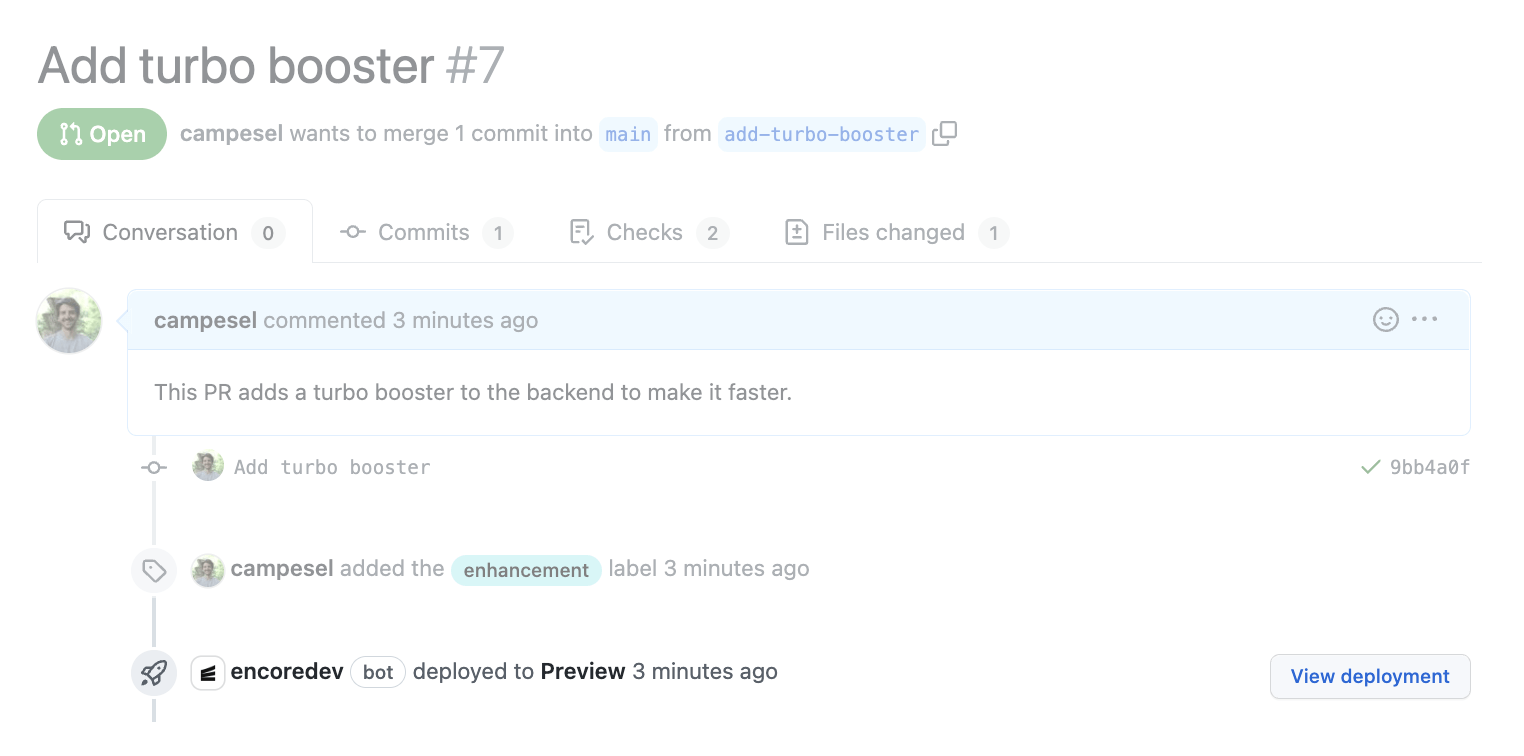Preview Environments for Microservices
Speed up development and testing with Preview Environments

Implementing a microservices architecture will often involve intricate processes and practices for effective testing and Continuous Integration/Continuous Deployment (CI/CD). A fundamental component for improving the effectiveness of testing is the use of preview environments. These environments clone the production setup, facilitating comprehensive testing and preview of changes per pull request (PR), before merging to a shared development environment.
This guide will provide a look at implementing preview environments, highlighting common pitfalls and considerations to bear in mind.
What are Preview Environments?
Preview environments represent individual, temporary deployments created for each PR. These are faithful replicas of your production environment that encompass all microservices, databases, and dependencies. Preview environments serve to detect integration issues at the early stage, provide a testing ground for new features, and solicit feedback from stakeholders.
However, setting up and managing preview environments can be complex and resource-intensive, requiring careful planning and implementation. Below are the key steps involved, potential challenges, and considerations:
1. Containerization with Docker
The first step is to containerize your services using Docker, creating isolated and consistent environments for each service.
While Docker simplifies the creation and management of containers, it’s essential to ensure efficient Dockerfile writing and image management to avoid common pitfalls such as large image sizes and long build times.
2. Orchestration with Kubernetes
Kubernetes, a container orchestration platform, is instrumental in managing and scaling your services. For every PR, a new Kubernetes namespace is created to host your preview environment.
Kubernetes, while powerful, has a steep learning curve. Understanding its components and their interaction, as well as managing resources and securing the cluster, are challenges that require proficiency.
3. CI/CD Integration
Integrating your CI/CD pipeline, such as Jenkins, CircleCI, or GitHub Actions, will automate the building, testing, and deploying of your preview environments.
CI/CD tools come with their own challenges and considerations. For instance, defining effective pipeline stages, managing secure access to resources, or handling failed deployments need careful consideration.
4. Cleanup
Cleanup is essential to ensure efficient resource usage and system hygiene. When a PR is closed, corresponding Kubernetes namespaces and Docker images should be deleted.
An often overlooked aspect is effective cleanup. Failed cleanup processes can result in wasted resources or orphaned components that can interfere with future deployments.
Considerations for using Preview Enviornments effectively
Preview Data Management
Preview environments often require mock data that resembles production data. Managing and sanitizing this data to protect sensitive information, while ensuring it remains useful for testing, is a challenge.
Networking and Service Discovery
Preview environments involve dynamically created and destroyed services. Implementing service discovery and secure networking between these ephemeral services can be complicated.
Monitoring and Logging
Effective monitoring and logging solutions are necessary for observing preview environments. Tools like Prometheus for monitoring and the ELK stack for logging can offer valuable insights. However, these tools need careful configuration to collect meaningful metrics and logs without overwhelming your infrastructure.
Tools to simplify using Preview Environments
1. Encore

Encore Cloud is tool which caters to those looking for a developer-centric and flexible approach to Infrastructure as Code.
One of Encore's standout features is the automatic provisioning of preview environments, which enable developers to view changes before deploying them. Encore’s preview environments come with built-in distributed tracing and instrumentation for key performance metrics, providing valuable insights into the behavior of the application.
When you're using Encore to build your backend application, the only setup needed to activate preview environments is to connect your GitHub account, and you will immediately get the benefits of per Pull Request preview environments. You don't need to worry about orchestration, integration, cleanup, or implementing any separate monitoring.
Benefits
- Ease of Use: Encore is designed to be highly accessible, making it particularly easy for developers to use, even without extensive DevOps expertise.
- Automation: Encore's implementation provides automatic provisioning of preview environments for each pull request, without requiring any configuration.
- Speed: Encore's preview environments are provisioning in less than a minute, markedly faster than other solutions.
- Built-in Tracing and Metrics: Offers automatic instrumentation with distributed tracing and key performance metrics, which greatly aids in debugging and performance monitoring.
- Collaboration Features: Encore comes with features to aid collaboration such as generated frontend clients, helping you work more smoothly across backend and frontend development.
Limitations
- Language specific: With Encore your application code and infrastructure declarations are all in the same programming language, which means not all programming languages are supported. Currently Encore supports Go and TypeScript, with Python support coming soon. See the docs for the latest information.
Suitable For
Teams that want to concentrate on developing their application and prefer a tool that simplifies both preview environment creation and monitoring, without needing in-depth DevOps knowledge. If you're interested, you can learn more about Encore in the docs.
2. Okteto
Okteto is a tool geared toward Kubernetes development. It allows developers to define preview environments in a Kubernetes-native way, enabling them to develop and test in a replica of the production environment.
Benefits
- Kubernetes Integration: Strong compatibility with Kubernetes, making it suitable for teams already using Kubernetes.
- Collaboration Features: Enables collaboration among team members, which can facilitate coordinated development.
Limitations
- Kubernetes Requirement: Its dependency on Kubernetes can be a barrier for teams not using or familiar with it.
- Complexity: Can be more challenging to set up and maintain compared to more streamlined solutions like Encore.
Suitable For
Teams already invested in Kubernetes looking for a solution that aligns with their existing technology stack and offers collaboration features.
3. env0
env0 provides an environment-as-a-service solution that helps automate the entire development and deployment lifecycle. It allows for the creation of preview environments, though without the built-in tracing and metrics found in Encore.
Benefits
- Automation Capabilities: Offers robust automation features for environment creation, saving time and effort.
- Customization: Provides flexibility in defining and customizing preview environments according to specific needs.
Limitations
- Lack of Built-in Tracing and Metrics: Unlike Encore, env0 doesn't come with built-in tracing and metrics, which can make monitoring and debugging more challenging.
- Higher Complexity: env0 requires more configuration and expertise compared to more streamlined options like Encore.
Suitable For
Organizations looking for a highly customizable and automated solution for managing preview environments, with the capacity to invest in additional tools for monitoring and debugging.
Conclusion
Preview environments significantly enhance the feedback loop when building in a microservices architecture. While they offer multiple benefits, setting them up is often a non-trivial task and demands expertise, time, and resources. While many tools offer distinct features for preview environments, Encore Cloud stands out for its ease of use and completeness of tooling with built-in tracing and metrics. This makes it a particularly attractive option for teams looking to simplify the preview environment process without losing out on crucial insights.